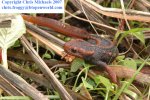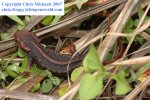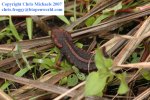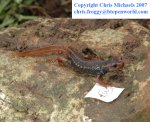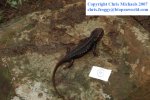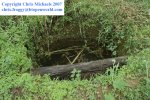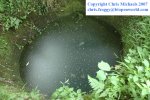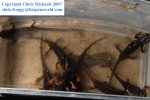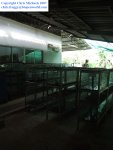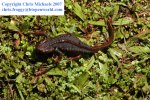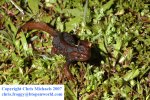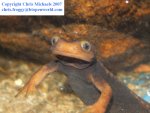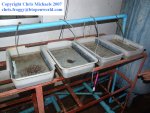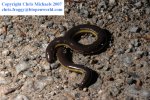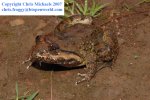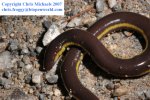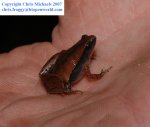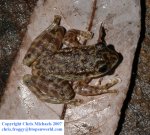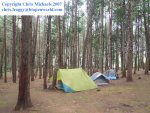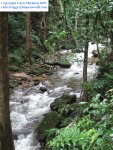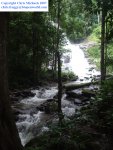froggy
Site Contributor
- Joined
- Nov 8, 2002
- Messages
- 1,779
- Reaction score
- 34
- Points
- 48
- Age
- 37
- Location
- Manchester, England
- Country
- United Kingdom
- Display Name
- Chris Michaels
I recently returned from Chiang Mai Province, in Northern Thailand where I spent two and a bit weeks looking for amphibians in Chiang Dao Wildlife Sanctuary and Doi Inthanon National Park. We found T. verrucosus (at least, verrucosus according to Nussbaum and Brodie 1995) in both parks, where they are said to be very scarce. In Chiang Dao, the newts are limited to a few small habitats of only a few hundred square metres, whereas those in Doi Inthanon seem to be scattered very sparsely over a wide range. There is little or no ecological data on these populations, so no one really knows how many are there or how big their habitats really are.
In Chiang Dao, we found the newts in two out of three known populations (the third is very hard to access and find), where they inhabit areas of low scrubby vegetation, such as grasses and bamboo. They breed in small silted ponds with little or no truelly aquatic vegetation at the beginning of the wet season. I could only get photos of one of the two localities in Chiang Dao as the second was visited at night during heavy rain. In one locality, many male animals were collected in ponds, but no females were found. In the other, we searched for animals during the day on land and found a mix of males and females beneath the cut grass.
In Doi Inthanon, we found only a single female wandering on a grass verge at night.
In Chiang Dao, we found the newts in two out of three known populations (the third is very hard to access and find), where they inhabit areas of low scrubby vegetation, such as grasses and bamboo. They breed in small silted ponds with little or no truelly aquatic vegetation at the beginning of the wet season. I could only get photos of one of the two localities in Chiang Dao as the second was visited at night during heavy rain. In one locality, many male animals were collected in ponds, but no females were found. In the other, we searched for animals during the day on land and found a mix of males and females beneath the cut grass.
In Doi Inthanon, we found only a single female wandering on a grass verge at night.
Attachments
Last edited by a moderator:

